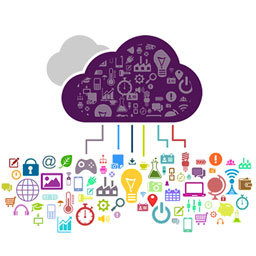
The Internet of Things, or IoT refers to physical objects that require an IP address, are connected to the internet, and collect and exchange information with each other via cloud services such as ifttt.com. Reed Switches and reed sensors help monitor various parameters on Internet connected devices using Apps, for example, to monitor the status of a window, or the level of water in a sump etc.
The Internet of Things (IoT) describes physical objects that are embedded with sensors, processing ability, software, and other technologies that connect and exchange data with other devices and systems over the internet or other communication networks. The IoT encompasses electronics, communication, and computer science engineering. "Internet of Things" has been considered a misnomer because devices do not need to be connected to the public internet; they only need to be connected to a network and be individually addressable.

The field has evolved due to the convergence of multiple technologies, including ubiquitous computing, commodity sensors, increasingly powerful embedded systems, and machine learning. Traditional fields of embedded systems, wireless sensor networks, and control systems independently and collectively enable the Internet of Things.
While in the consumer market, IoT technology is most synonymous with "smart home" products—including devices and appliances like thermostats and smart speakers—the technology's largest applications are in the business and industrial sectors. Commercial asset tracking and fleet management represent the largest single application of IoT, accounting for 22% of the total market, driven by the need to monitor mobile assets like vehicles and shipping containers. Other major applications include industrial monitoring, smart metering in utilities, and connected healthcare.
However, several concerns exist regarding the risks associated with the growth and diffusion of IoT technologies and products, particularly in the areas of privacy and security. Consequently, several industries, technology companies, and governments (or their branches, ministries, bureaus, departments, etc.) of many countries have taken multiple steps and implemented a variety of precautionary measures to address these concerns adequately and minimize safety risks, including the development and implementation of international and local standards, guidelines, and regulatory frameworks. Due to their interconnected nature, IoT devices are vulnerable to security breaches and privacy concerns. At the same time, the way these devices communicate wirelessly creates regulatory ambiguities, complicating jurisdictional boundaries of the data transfer.